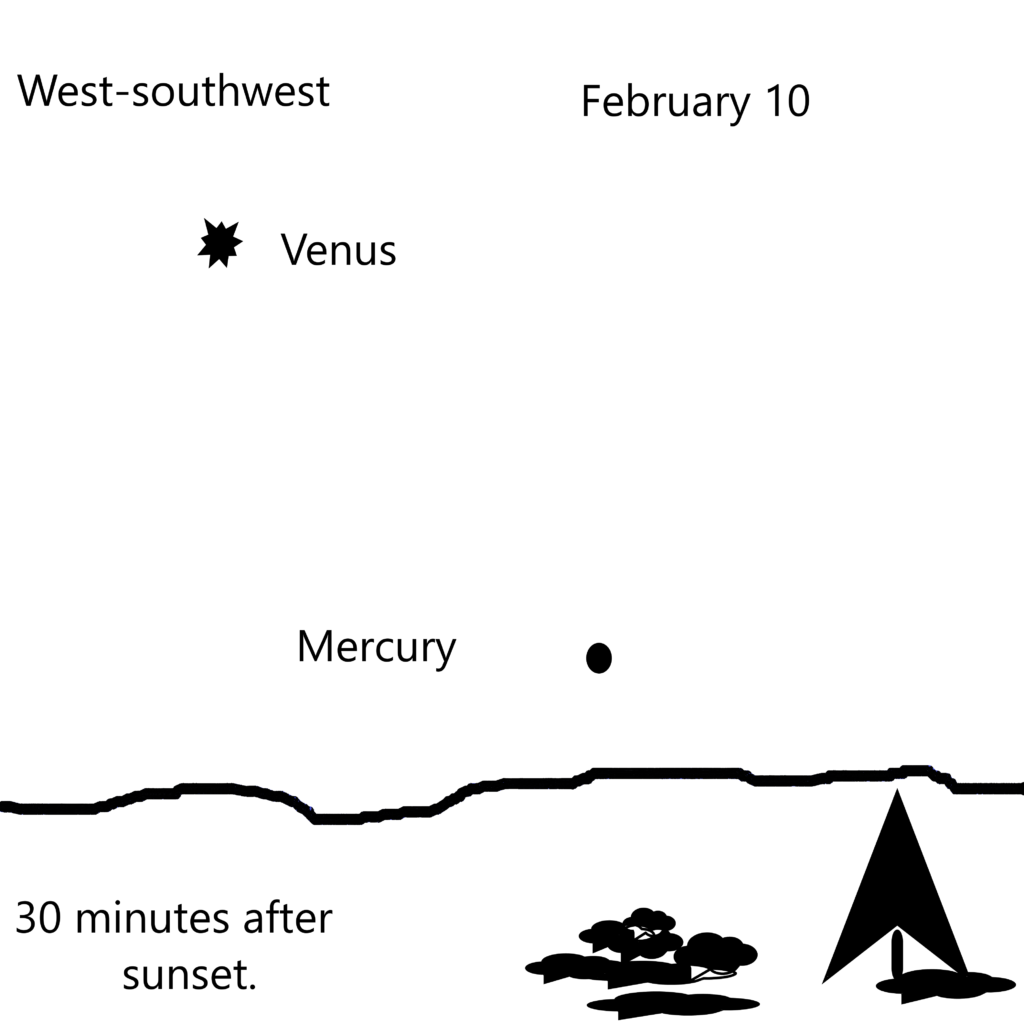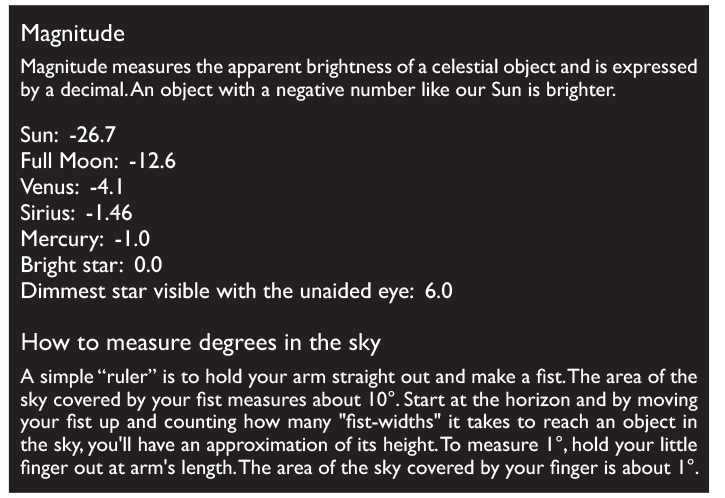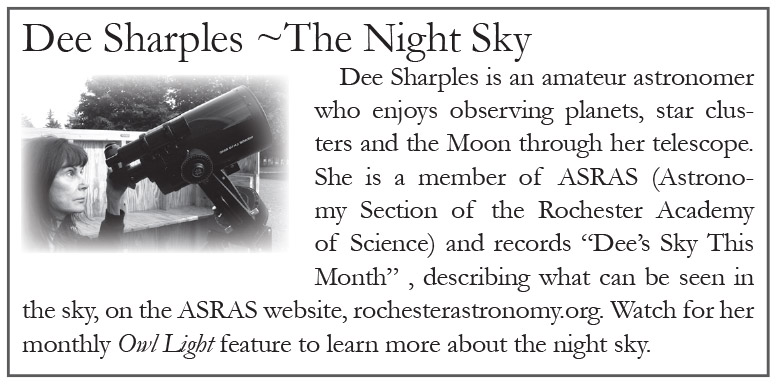THE NIGHT SKY-February
- By Dee Sharples –
Elusive Mercury comes into view in February

Not very many people have seen the elusive planet Mercury in the sky, but there’s an opportunity in February to do just that. Mercury is the smallest planet in our solar system and the planet which lies closest to the Sun. Because of this, it can only be seen for a short time after the Sun sets this month.
The first thing you’ll need is an observing location with a clear view of the west-southwest horizon with no obstructions to block your view, such as trees or houses. On February 1st, the planet can be spotted half an hour after the Sun sets, only seven degrees above the horizon. That’s less than one fist-width. It will shine brightly, looking like a magnitude -1.0 star.

The planet Venus is a bright beacon which will help you locate Mercury. Venus, which will shine brilliantly at magnitude -4.1, will be impossible to miss in the evening sky. Mercury will be about 2½ fist-widths below and slightly to the right of Venus. By February 10th, Mercury will have already started to dim to magnitude -0.6 but will now be 11 degrees above the horizon and easier to spot because of its higher altitude in the sky. It will continue to fade quickly each night after that.
Mercury is one of the four terrestrial planets, those planets which are comprised of rock and metal, such as iron, with a solid surface. Earth, Venus, and Mars are the other three.
Mercury is only slightly larger than our Moon and its surface looks very similar, covered with countless craters caused by collisions with comets and meteoroids since it formed 4.5 billion years ago. There are also areas of smooth terrain and steep cliffs hundreds of miles long and up to one mile high. It’s the fastest planet in our solar system making its journey around the Sun at 29 miles per second in only 88 days. While Mercury speeds around the Sun, it rotates on its axis very slowly, only once every 59 days. Earth rotates once every 24 hours, making a day on Earth 24 hours long, but a “day” on Mercury is 59 Earth days long.
Mercury’s axis is tilted only 2 degrees – Earth’s axis is tilted 23.5 degrees. Because Mercury spins almost perfectly upright, it does not experience seasons as we do, since a planet’s tilt is what causes the changing seasons as it circles the Sun.
Not surprisingly, temperatures on the surface of Mercury are hot! During the day, temperatures can reach 800 degrees Fahrenheit. Because the planet has no atmosphere to retain that heat, the nighttime area on the surface can drop to minus 290 degrees Fahrenheit.
Mercury, a planet of extremes, began giving up its secrets when the Mariner 10 spacecraft visited the planet in 1974, followed by Messenger which went into orbit around the planet in 2011. A multi-national spacecraft named BepiColumbo is on its way to Mercury, scheduled to start orbiting the planet in 2025.
The brightest star in the night sky, Sirius, also known as the Dog Star, lies due south at 10:00 PM, close to the horizon shining at magnitude -1.46. It appears to twinkle more than other stars because we’re looking at it through a denser, dustier part of the atmosphere near the horizon.
Hopefully, February will have more clear nights than we’ve seen in recent months.
